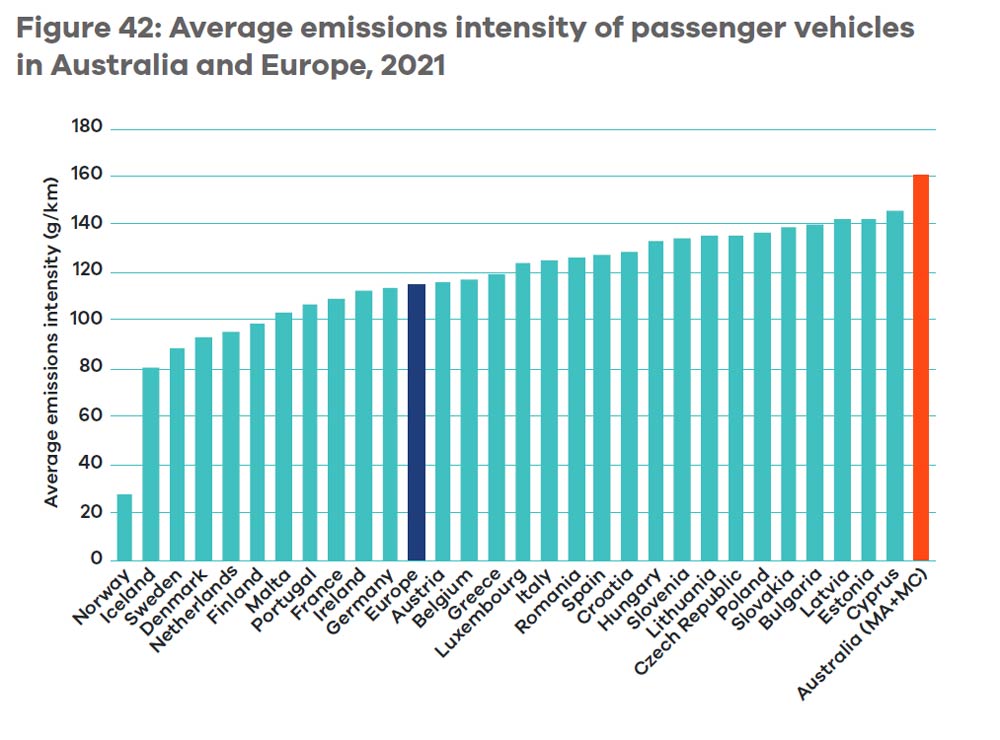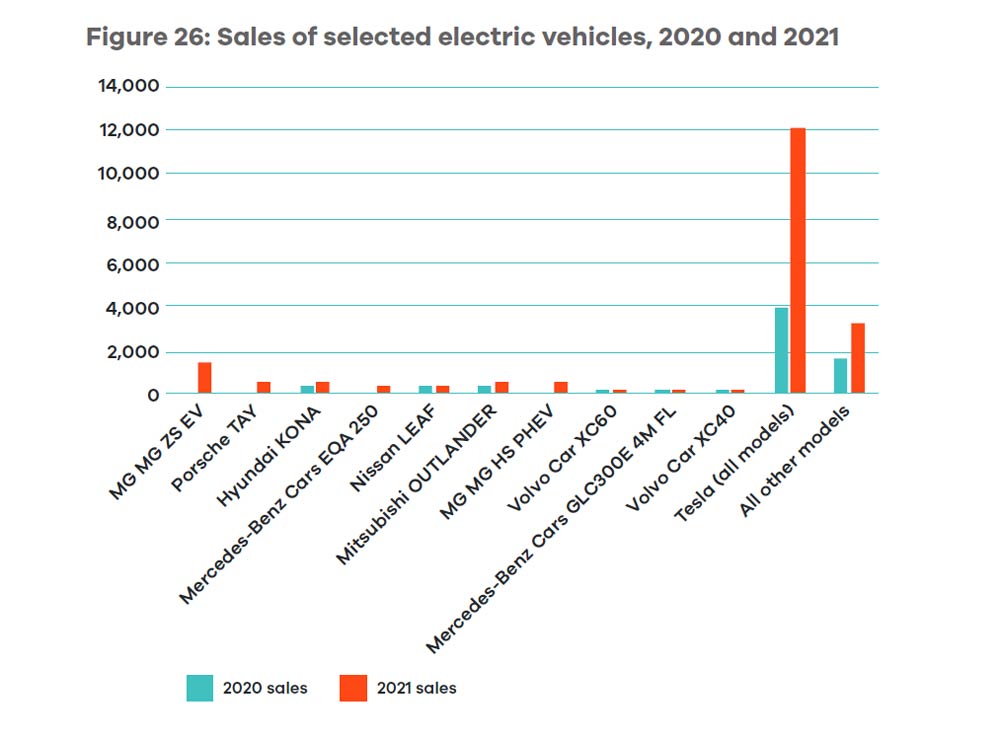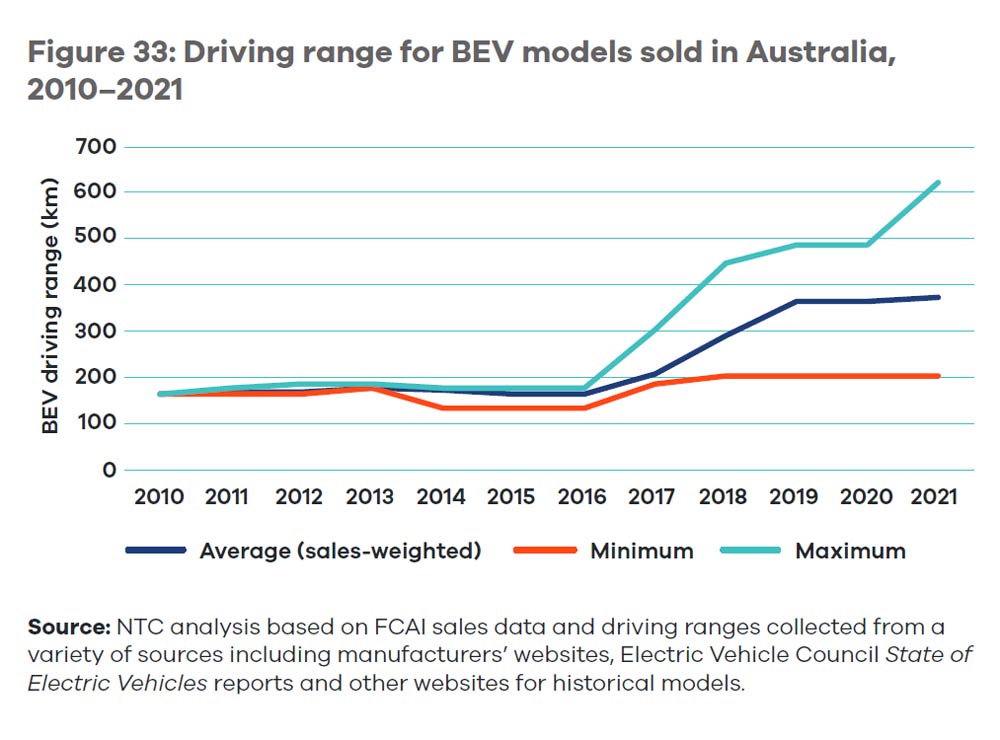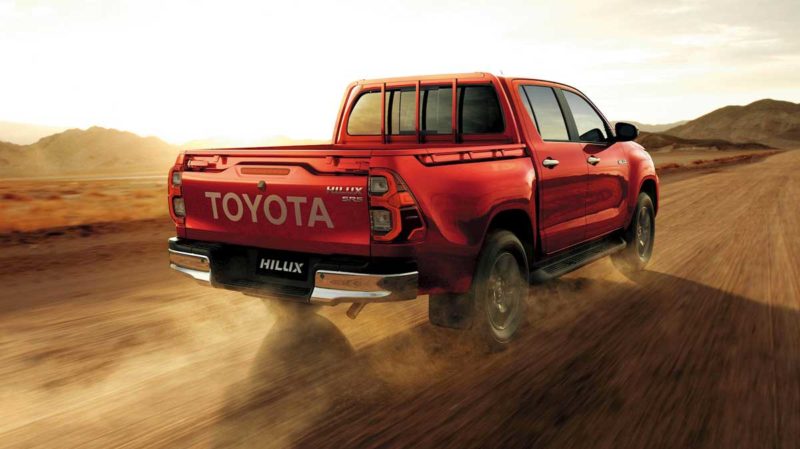Increasing sales of medium and large SUVs and utes are decimating the small reductions in carbon emissions gained from Australia’s slow uptake of electric vehicles.
A new report released today by the National Transport Commission (NTC) said that because of the continued preference for large vehicles, Australia continues to fall behind other countries.
The latest NTC report, titled “Carbon Dioxide Emissions Intensity for New Australian Light Vehicles 2021,” says that Australia’s transport emissions reduced 2% from 2020.
But it is still falling far behind, as this figure shows below. Whilst Europe – which fines carmakers for not reaching stipulated emissions targets – achieved a fleet average of 115gmCO2e/km, Australia’s emissions are still sitting at 160gmCO2e/km (adding together passenger cars, light SUVs and heavy duty SUVs and utes.)
Pushing Australia’s emissions up are utes and SUVs, the average emissions for which exceed 210gmCO2e/km.

Key to the reduction of transport-related emissions in other countries is legislated carbon emissions targets that ensure carmakers sell enough zero and low-emissions vehicles to offset polluting, high emissions vehicles.
According to the NTC, “if all cars sold were ‘best in class’ for emissions, Australia’s total emissions for lighter passenger vehicles and small SUVs would have reduced by 91 per cent and larger SUVs and utes reduced by 47 per cent.”
Australia has no such targets, except voluntary emissions standards implemented by the Federal Chamber of Automotive Industries (FCAI), which most carmakers failed to achieve in its April report.
Because of this, carmakers continue to sell large 4×2 and 4×4 utes in particular, as well as medium and large SUVs. As the NTC report notes, “sale of 4×4 and 4×2 utes increased by more than 43,000 between 2020 and 2021, and large SUV sales increased by around 25,000.”
The latest figures from the FCAI show there is no sign of this trend slowing down. Year-to-date August 2022, there were 12,000 more medium and large SUVs sold than in 2021.
While there were 1,000 less utility vehicles sold year-to-date compared to the previous period, this is more likely because global supply chain crisis and pandemic challenges have delayed manufaturing and shipping of vehicles.
The NTC estimates there are currently 42,500 EVs on the road against a wider national fleet of 18.4 million passenger and light commercial vehicles.
Battery electric vehicle sales totalled around 17,000 in 2021. This was lead by and large by Tesla, which sold 12,094 vehicles in Australia in 2021.

Clean energy lobby group Solar Citizens says the report underlines the importance of legislating fuel efficiency standards in Australia.
“Australians love their utes, and the market is already responding to the demand for a right hand drive EV ute,” said Solar Citizens clean transport campaigner Ajaya Haikerwal in a note to The Driven.
Shadow deputy leader Sussan Ley made a wildly inaccurate claim in August that no carmakers are making electric utes, a fact that was roundly debunked.
Whilst several EV makers are making left-hand drive utes, there is already a right-hand drive LDV ute available in New Zealand, and there are signs it may come to Australia in the not-to-distant future. But not even this electric ute has yet been cemented for the local market, despite the likelihood it would be welcomed by drivers.
“When electric utes arrive in Australia, we know that people will embrace them,” said Haikerwal. “Demand for EVs has never been higher and when Australians can pair their love of utes with the petrol and pollution savings of an electric model, they will leap at the opportunity.”
Australia is starting to adopt more electric vehicles, as state incentives and stamp duty waivers encourage more drivers to make the switch, and more vehicles with longer driving range become available.

August in particular saw a record uptake of 4.4% for EVs on the local market, spearheaded by Tesla which started delivering its Model Y and recommenced deliveries of the Model 3.
However, the global average for EV market share now sits at 17 percent according to the NTC, underlining how far Australia still has to go.

Bridie Schmidt is associate editor for The Driven, sister site of Renew Economy. She has been writing about electric vehicles since 2018, and has a keen interest in the role that zero-emissions transport has to play in sustainability. She has participated in podcasts such as Download This Show with Marc Fennell and Shirtloads of Science with Karl Kruszelnicki and is co-organiser of the Northern Rivers Electric Vehicle Forum. Bridie also owns a Tesla Model Y and has it available for hire on evee.com.au.


